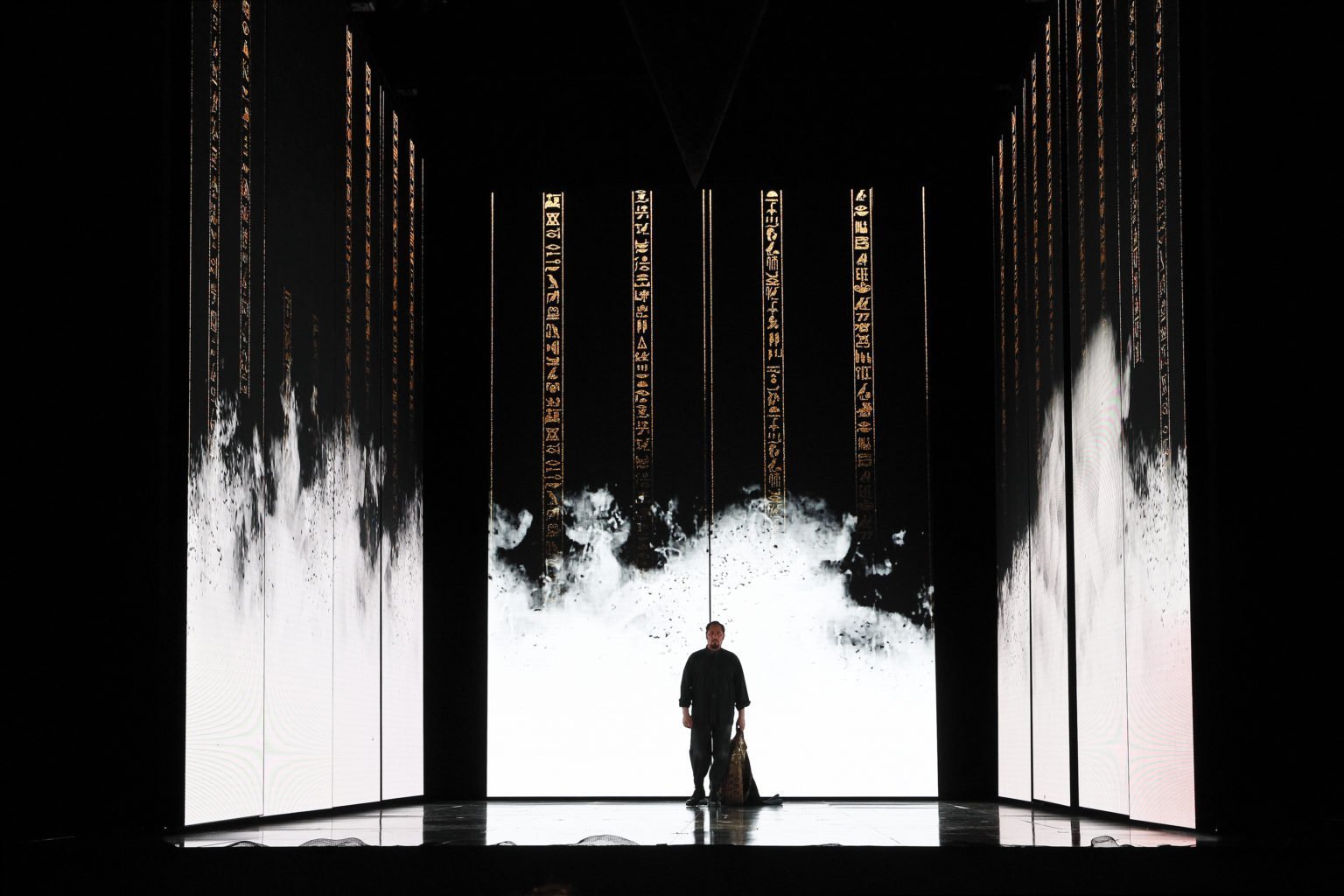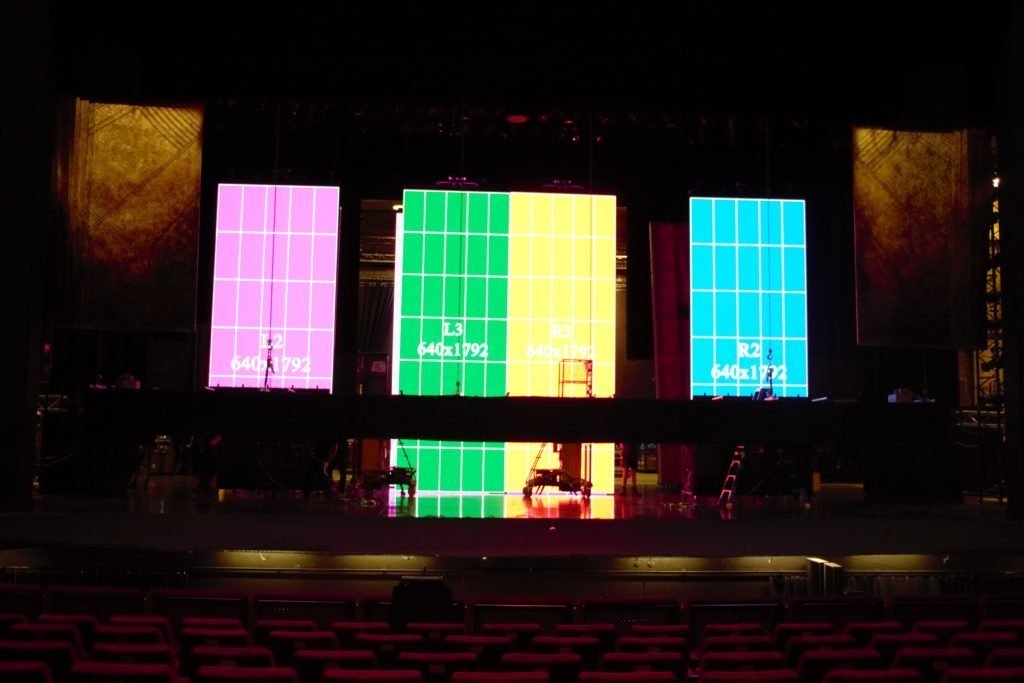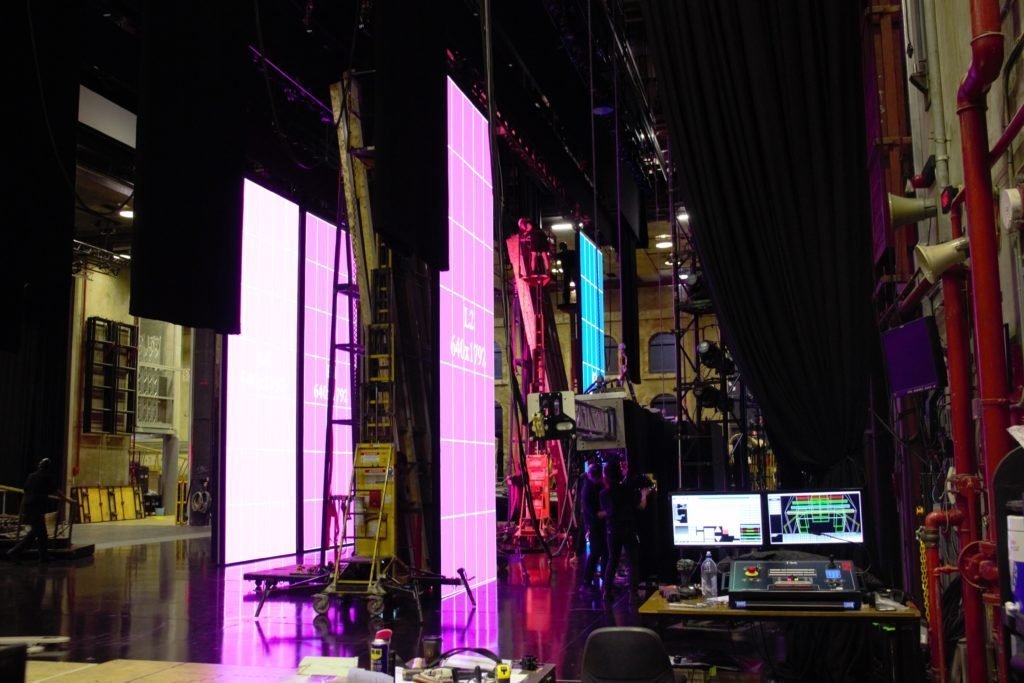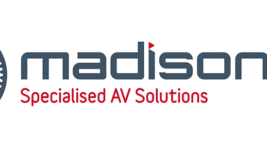News
30 Jun 2021
The Tech of Opera Australia’s Aida

Subscribe to CX E-News
Big Picture is proud of its ongoing association with Opera Australia and we are happy that we have finally been able to bring the digital stage environment to Melbourne.
Aida’s Melbourne season used 175 square meters of UniView Tekken 3.9 with Brompton Processing arranged into 10 columns seven metres tall. These were all driven by a fully redundant disguise system comprising of four gx 2c servers. In addition to the LED outputs, there is also a front projection element using a Barco UDX-4k32 laser projector. The disguise system is managing eight 4K content layers, as well as dealing with incoming data streams from Opera Australia’s custom Raynok automation system, which manages the individual screens rotation and tracking on and off stage.
The show cues within disguise are synced with lighting and controlled via sACN triggers. In past productions, the list of data inputs has included the in-house Waagner Biro fly system at Sydney Opera House, and tracking beacons from Zactrack and BlackTrax. It has been a task in itself to create a base file within disguise that has all of these external data parameters already written, so we can distribute the base file to all of the upcoming productions that will be using the digital setup. The current disguise system has been designed so that it has enough headroom to deal with multiple digital shows in rep. These shows could incorporate additional LED or projection elements without having to add to the server side of the system.
Before the system’s debut in 2018, there was a lot of research and development, as well as a good amount of trial and error. Since that first season in Sydney there have been incremental changes to the system to make it more robust and expandable to deal with larger shows and additional video elements.
Having two or three digital shows in rep is easy; you simply load a new show file and the isual aspects are ready to go. But when you rep with shows that are more traditional, we need to remove the LED panels to make way for large set pieces and flown items, which has to been done quickly and efficiently.
The main challenge with Aida was to be able to install 175 square meters of hi-res LED in two hours and remove it in one hour. We got creative with some customised set carts and some specialised locator pins which enable us to break the screens down into 2.5 x 2m sections. This method of building LED is not new, but it has not been widely adopted with hi-res products due to their fragility. The large number of LEDs so close to the edge of the panels as well as the precise manufacturing tolerances required for a seamless wall make them much more prone to damage. So far, we have been really happy with how the product has stood up to the rigorous ins and outs of the schedule.
Crew Credits
Video System Supervision for Big Picture: Nick Bojdak and Jeremy Moore
Onsite disguise Operator: Peter Lynn
LED System Techs: Matt Downs, Brett Pichler, and Dean Pentz
Creative Team
Conductor: Tahu Matheson
Director and Choreographer: Davide Livermore
Revival Director: Shane Placentino
Set Designer: Giò Forma
Costume Designer: Gianluca Falaschi
Digital Content Designer: D-Wok
Lighting Designer: John Rayment
Assistant Director: Shaun Rennie
Subscribe
Published monthly since 1991, our famous AV industry magazine is free for download or pay for print. Subscribers also receive CX News, our free weekly email with the latest industry news and jobs.








